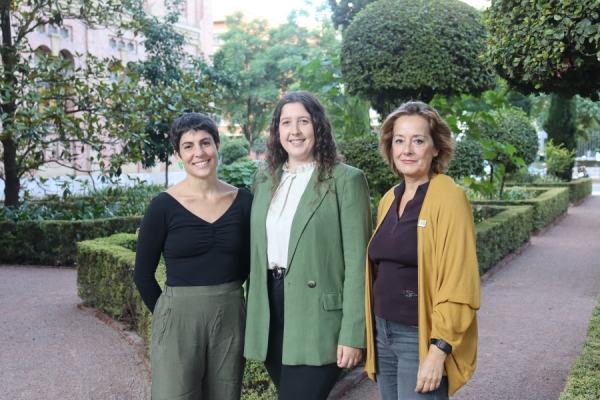Grazing is a common practice in extensive livestock farming, a production model that takes advantage of the territory's natural resources to feed animals. The availability of grass, however, is shaped by factors such as the weather: when water is scarce, the production of grass drops, which forces the livestock sector to resort to greater amounts of other supplies and external food sources, which entails higher costs. In order to support more efficient livestock management, a team led by IFAPA, in collaboration with the University of Cordoba, has used meteorological data and remote sensors to model the productivity of pasturelands and their levels of water stress, establishing the relationships between these two variables on different spatiotemporal scales. The result is a tool that allows one to generate curves of grass production based on the availability of water. This information makes it possible to make decisions about the management of grazing and optimal livestock numbers, taking into account the availability of water, which is very useful, especially in times of shortages.
The study, which is part of the European ScaleAgData project, was carried out on dehesas (forested, mixed-use pasturelands typical of Mediterranean Spain) in the north of the province of Córdoba, in the regions of Los Pedroches and Alto Guadiato, where livestock plays an important economic and social role. It is also an ecosystem that is very vulnerable to drought, an increasingly frequent phenomenon and, therefore, one of the main concerns of the agriculture and livestock sectors.
As explained by researchers Ana Andreu Méndez, with the Fluvial Dynamics and Hydrology group in the María de Maeztu Unit of Excellence - Department of Agronomy (DAUCO); and María José Muñoz Gómez and María P. González Dugo, researchers at the Alameda del Obispo Center IFAPA Center, 17 years of historical meteorological data and remote sensors were analyzed to model the productivity of the grass ― based on the efficiency of the plant's use of light, and water stress― through a surface energy balance to estimate evapotranspiration.
Up to 67% less grass
The study confirmed that during the most severe droughts, biomass production decreased, but the model also quantified the severity of its impact: in the driest years in the historical series (2001-2018), grass production dropped between 42% and 67%. It was also found that the areas with limited slopes and moderate tree cover were the most productive. The analysis and methodology applied have made it possible to generate grass production curves based on water availability.
The tool is being launched by COVAP, the largest livestock cooperative in the province, so that this information can reach its members. And, although the data used reflect the reality of the area studied, the researchers say that the results and methodology could be adapted to other Mediterranean and semi-arid areas to promote efficient and sustainable management in a context of climate change.
Reference: Muñoz-Gómez, M. J.; Andreu-Méndez, A.; Carbonero-Muñoz, M. D.; Blázquez-Carrasco, A.; González-Dugo, M. P. 'Impact of water stress on Mediterranean oak savanna grasslands productivity: Implications for on-farm grazing management'. Agricultural Water Management 2024, Volume 303. https://doi.org/10.1016/j.agwat.2024.109025


